I'm a Raider...
Best of luck to Coach Ginty and the North Quincy High School Volleyball team as they compete against city rival Quincy High School tonight at NQ!
Science Update
For the past few days, we have been making very slow progress through some thick ice. If you look at the latitude and longitude positions (or click on the map tab above), you won't notice much of a difference in our location. The progress is slow going, so we have not been able to collect seawater samples. Yesterday, we collected incubation samples for Incubation 2 & 3. We are nearing the end of Incubation 2, with the conclusion on Incubation 3 not far behind. Today, some members of the science team work on sampling for their individual experiments. Other science team members are busy updating lab notebooks and computer spreadsheets, some are packaging samples for shipment and others are catching up on emails and other matters. Members of the molecular biology teams from the University of Rhode Island (URI) and Old Dominion University (ODU) are using this time to work on cell isolations. One thing is for sure, ALL aboard the RVIB Palmer will be thinking positive thoughts for more success at breaking ice throughout the day.
Note: We are not in danger, we are just making slow progress through thick patches of ice. The process is even more challenging because of the large amount of snow that has fallen over the past few days. Everyone is in good spirits and looking forward to getting through the ice and continuing our sampling before our departure for Chile
Finding Tiny DiatomsDiatoms are one of the most common types of phytoplankton. Most diatoms are unicellular, although they can exist as colonies in the shape of filaments or ribbons. Diatom communities are a popular tool for monitoring environmental conditions, past and present, and are commonly used in studies of water quality.
When incubation sampling and rosette sampling is not on the plan for the day, members of the science team can take time to isolate diatoms. Cell isolation is the process of removing individual cells from samples, in this case, the filtered biomass from the seawater samples. If you were trying to isolate puppies from a liter, you would pick up an individual puppy and move it to a crate or another enclosed area. Puppies are easy to see and easy to pick up. DiatomsDiatoms are one of the most common types of phytoplankton. Most diatoms are unicellular, although they can exist as colonies in the shape of filaments or ribbons. Diatom communities are a popular tool for monitoring environmental conditions, past and present, and are commonly used in studies of water quality. are not. If you remember from the journal on diatoms, these unicellular organisms are microscopic (2um-2mm in size). They are usually not visible to the naked eye and cannot be picked up with your hands. Instead, tools like microscopes and pipettes are used to help isolate individual diatoms. This is a difficult task in a land-based lab – imagine trying to isolate diatoms on a moving ship!
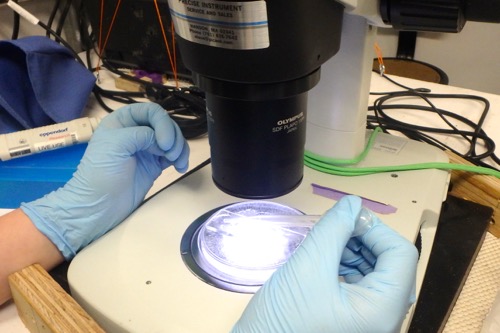
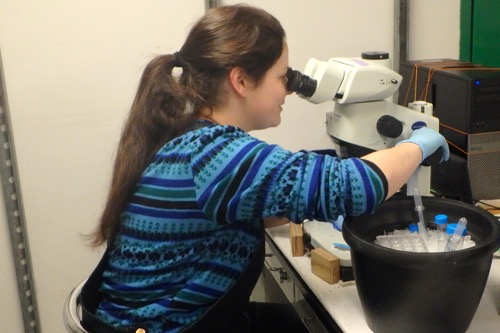
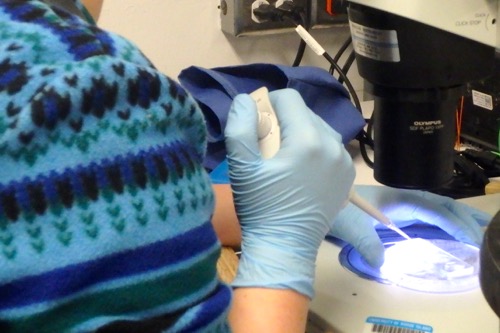

Individual diatoms are placed in media (a solution containing nutrients). The standard media contains trace metals, vitamins and other nutrients that are required by diatoms for growth. The media can be altered in the future for experimentation. The isolated cells are then used to create cell cultures.
Growing Cells
Creating cell cultures is a common practice in molecular biology. To create a cell culture, cells are grown under controlled conditions outside of their natural environment. Media containing a nutrient mixture supplies the cells with food and other molecules needed for growth. Individual cells can be isolated and cultured to produce large quantities of cells (usually with the same genetic make-up). Many different types of cells can be isolated and cultured for research. Here are some examples:
*Mammalian cell cultures
Mammalian cells can be isolated and grown to create stem lines for use in medical research. For my 10th grade biology students, you read about cell cultures in your summer reading book: The Immortal Life of Henrietta Lacks by Rebecca Skloot. Cells were taken from Henrietta's cancerous tumor and cultured, or grown, to create the stem line still used today.
*Bacterial cell cultures
Bacteria can be cultured using nutrient medias. This media can be placed into a Petri dish or vial and used to grow bacteria. If you have ever had strep throat, your doctor may have collected a throat culture sample to look for bacteria. When the doctor swabs the back of your throat, the swab is spread across a Petri dish filled with growth media and incubated to allow bacterial growth. If the bacteria responsible for the throat infection (Streptococcus phyogenes) is growing on the plate, you are diagnosed with strep throat.
*Diatom cell cultures
Isolated diatoms can be grown or cultured in order to produce larger quantities of specific species of diatoms. The isolated diatoms are placed into cold incubators for storage.
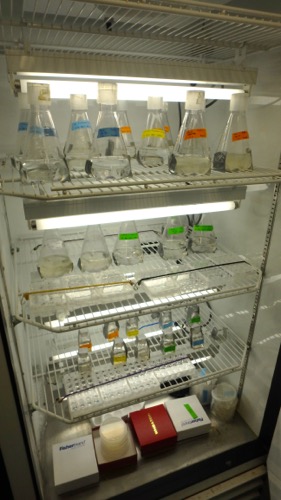
Large samples of these diatoms species can be used to analyze DNA and RNA sequences, species identification and to track growth. These samples can also be used in future experiments that can learn more about physiological changes. Laura Filliger and Dr. Bethany Jenkins from URI and Zuzy Abdala and Dr. Dreux Chappell from ODU have been working to isolate diatoms from the samples collected in the Drake PassageStrait, connecting the Atlantic and Pacific oceans between Tierra del Fuego and the South Shetland Islands. Located about 100 mi (160 km) north of the Antarctic Peninsula, it is 600 mi (1,000 km) wide. and around the Western Antarctic Peninsula. The ability to isolate and culture diatoms is important to the science team because it provides them with a source of Southern Ocean diatom species for future research. Diatom cultures needed for experiments can be purchased from culture banks, but they may not be the specific species that are found in the locations visited during this research cruise. Producing diatom cultures from this research cruise will allow the science team to continue studying these diatom species even if they cannot return to this area in the near future.
Love from Little Landlubbers
Today's paintings come from Kat and Maggie from Weymouth, MA. I was able to spend some quality time with these two ladies before I left for my trip. We sat on the porch on a beautiful summer day while I worked on PolarTREC paperwork and the girls painted some pictures. It was a great day! Thanks girls!
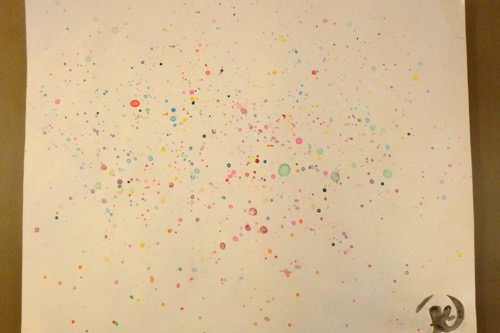
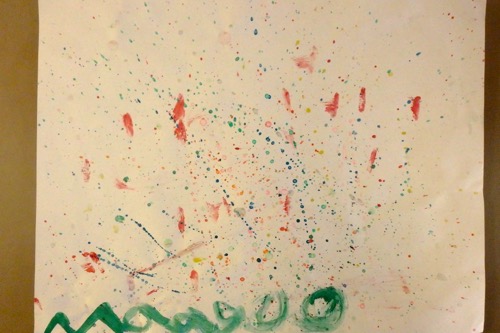


Comments